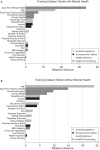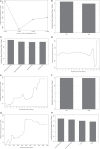Social and Behavioral Determinants of Perceived Insufficient Sleep
- PMID: 26097464
- PMCID: PMC4456880
- DOI: 10.3389/fneur.2015.00112
Social and Behavioral Determinants of Perceived Insufficient Sleep
Abstract
Insufficient sleep is associated with cardiometabolic disease and poor health. However, few studies have assessed its determinants in a nationally representative sample. Data from the 2009 behavioral risk factor surveillance system were used (N = 323,047 adults). Insufficient sleep was assessed as insufficient rest/sleep over 30 days. This was evaluated relative to sociodemographics (age, sex, race/ethnicity, marital status, region), socioeconomics (education, income, employment, insurance), health behaviors (diet, exercise, smoking, alcohol), and health/functioning (emotional support, BMI, mental/physical health). Overall, insufficient sleep was associated with being female, White or Black/African-American, unemployed, without health insurance, and not married; decreased age, income, education, physical activity; worse diet and overall health; and increased household size, alcohol, and smoking. These factors should be considered as risk factors for insufficient sleep.
Keywords: behavioral; cardiometabolic disease; insufficient sleep; poor health; sleep duration; social determinants.
Figures





References
-
- Colten HR, Altevogt BM; Institute of Medicine Committee on Sleep Medicine and Research. Sleep Disorders and Sleep Deprivation: An Unmet Public Health Problem. Washington, DC: Institute of Medicine, National Academies Press; (2006). - PubMed
-
- Ulmer C, Wolman DM, Johns MME; Institute of Medicine Committee on Optimizing Graduate Medical Trainee (Resident) Hours and Work Schedules to Improve Patient Safety. Resident Duty Hours: Enhancing Sleep, Supervision, and Safety. Washington, DC: National Academies Press; (2009). - PubMed
-
- Marmot M, Wilkinson R. Social Determinants of Health. Oxford: Oxford; (2005).
-
- Patel V, Fisher AJ, Cohen A. Social and cultural determinants of mental health. 4th ed In: Murray RM, Kendler KS, McGuffin P, Wessely S, Castle DJ, editors. Essential Psychiatry. New York, NY: Cambridge University Press; (2008). p. 419–33.
Grants and funding
LinkOut - more resources
Full Text Sources
Other Literature Sources

